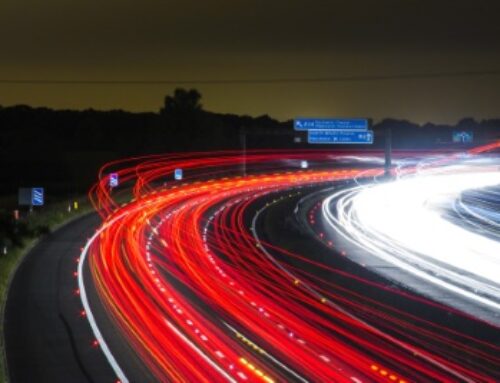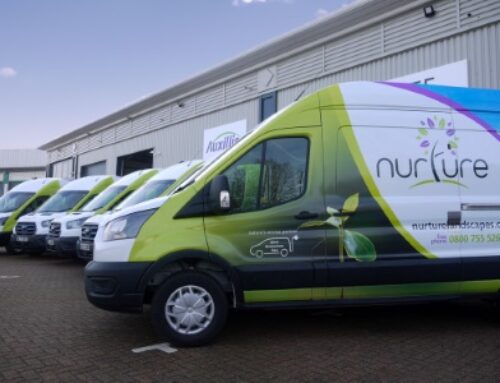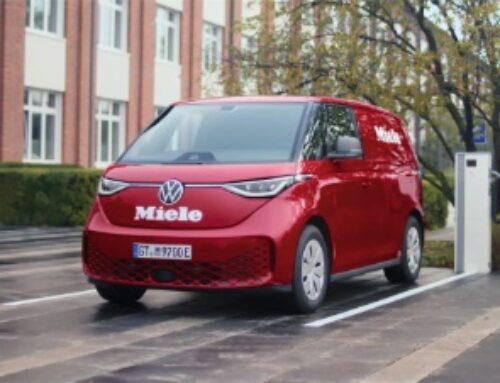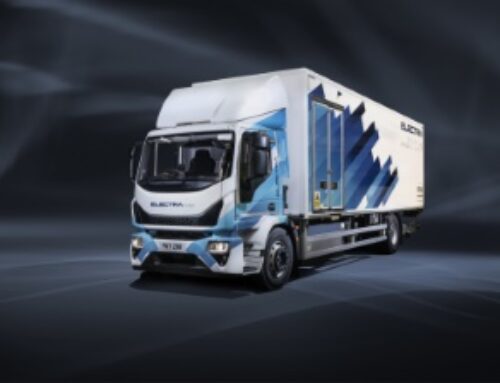VisionTrack: embracing AI analysis to boost road safety
 With Artificial Intelligence (AI) having an ever-greater influence on our everyday lives, so unsurprisingly, it has a growing role to play in how transport operators approach work-related road safety and reduce fleet risk.
With Artificial Intelligence (AI) having an ever-greater influence on our everyday lives, so unsurprisingly, it has a growing role to play in how transport operators approach work-related road safety and reduce fleet risk.
AI video telematics – using vehicle cameras connected to a cloud-based platform – has massive potential to help improve driver performance, support duty of care, and reduce road deaths and injuries, according to connected fleet data solutions provider, VisionTrack.
“We all want a future where no one is killed or injured on the road and fleet technology can make a huge difference,” said Richard Kent, president of global sales at VisionTrack (pictured, right).
“Work-related journeys account for a third of all traffic collisions each year, so there is an opportunity to embrace the latest AI innovation and save lives.”
In the broadest sense, AI is about using machines to perform tasks that would typically have required some form of human intervention and demonstrate behaviours associated with human intelligence. VisionTrack highlights two types of technology – edge-and cloud-based – which will see AI become increasingly embedded in fleet hardware and software. For edge-based solutions, the processing takes place close to the data source, such as a connected camera device, to provide real-time insight, whereas cloud-based solutions collect and process information in a centralised data centre for powerful post analysis.
AI vehicle cameras, using Advanced Driver Assist System (ADAS), Driver Status Monitoring (DSM) and Blind Spot Detection (BSD) technologies, have been around for several years. They are enabling businesses to maintain safety levels for both their drivers and other road users by automatically monitoring hazards on the road and high-risk behaviours.
Distractions such as mobile phone use, eyes away from road, smoking, eating and drinking, can be detected alongside other fleet risk, such as fatigue, tailgating and nearby vulnerable road users, so drivers can be encouraged to change potentially dangerous habits. In one international deployment of AI-powered video telematics installed across a public sector fleet numbering many thousands of vehicles, there was a reduction in risky driver behaviour of over 80 per cent within the first three months, VisionTrack reports.
Richard Kent continued: “These intelligent vehicle cameras have proven safety benefits, but they are still limited by the processing capacity of the device, so it is in the cloud where the true value of AI will be realised. We have invested heavily in our multi-award-winning IoT platform, Autonomise.ai, to develop game changing AI video telematics solutions that are helping to save time, costs and most importantly lives.”
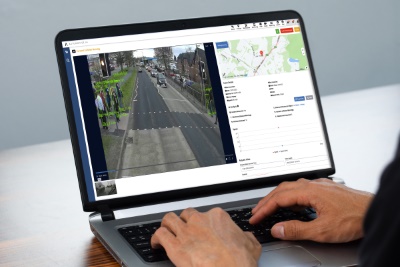 This year, VisionTrack launched an AI-powered post-analysis solution to transform fleet safety, NARA (Notification, Analysis and Risk Assessment), which it says revolutionises how vehicle camera footage is assessed by proactively removing false positives and monitoring driver behaviour, without the need for human involvement. With traditional video telematics solutions, businesses can experience hundreds of triggered daily events, says the company; NARA enables them to deliver more efficient working, while not compromising on road safety.
This year, VisionTrack launched an AI-powered post-analysis solution to transform fleet safety, NARA (Notification, Analysis and Risk Assessment), which it says revolutionises how vehicle camera footage is assessed by proactively removing false positives and monitoring driver behaviour, without the need for human involvement. With traditional video telematics solutions, businesses can experience hundreds of triggered daily events, says the company; NARA enables them to deliver more efficient working, while not compromising on road safety.
NARA represents a huge step forward for video telematics, VisionTrack contends, as it uses groundbreaking computer vision models with sensor fusion to assess footage of driving events, near misses and collisions; businesses can now make best use of video telematics insight to better protect road users and help prevent collisions by ensuring the review process is manageable and timely, while eliminating human availability or error.
According to Kent, video telematics solutions have previously relied either on third-party call centres or responsibility has fallen to the transport operator or their insurance partner.
“These monitoring options rely on high levels of resource availability and can be prone to delay or human error,” he continued.
“Such review systems can take hours or even days for footage to be assessed, making it impossible to manage, take control of, and support an effective fleet safety strategy.”
During the testing phase, a 1,100-strong logistics fleet was found to be generating on average 2,000 priority videos a week, which would typically take someone over 8 hours to review. NARA reduced the time needed to review events that require human validation to just minutes per day. As a result, the company is now targeting more efficient risk management, whilst supporting their road safety strategy.
Advanced object recognition uses deep learning algorithms to automatically identify different types of vehicles, cyclists and pedestrians. With incredibly high accuracy levels, it will be able to distinguish between collisions, near misses and false positives that can be generated by harsh driving, potholes or speed humps, says VisionTrack. The software also includes Occupant Safety Rating that uses a range of parameters to calculate the percentage probability of injury and immediately identify if a driver needs assistance.
“As a true advocate of road safety, having already pledged our support to global initiative Vision Zero, we are passionate about helping the industry achieve its target of eliminating all traffic fatalities. The latest generation of AI video telematics is enabling transport operators to access the right information at the right time, presented in a way that allows them to achieve significant change and encourage their drivers to operate in the most responsible manner,” concluded Kent.







